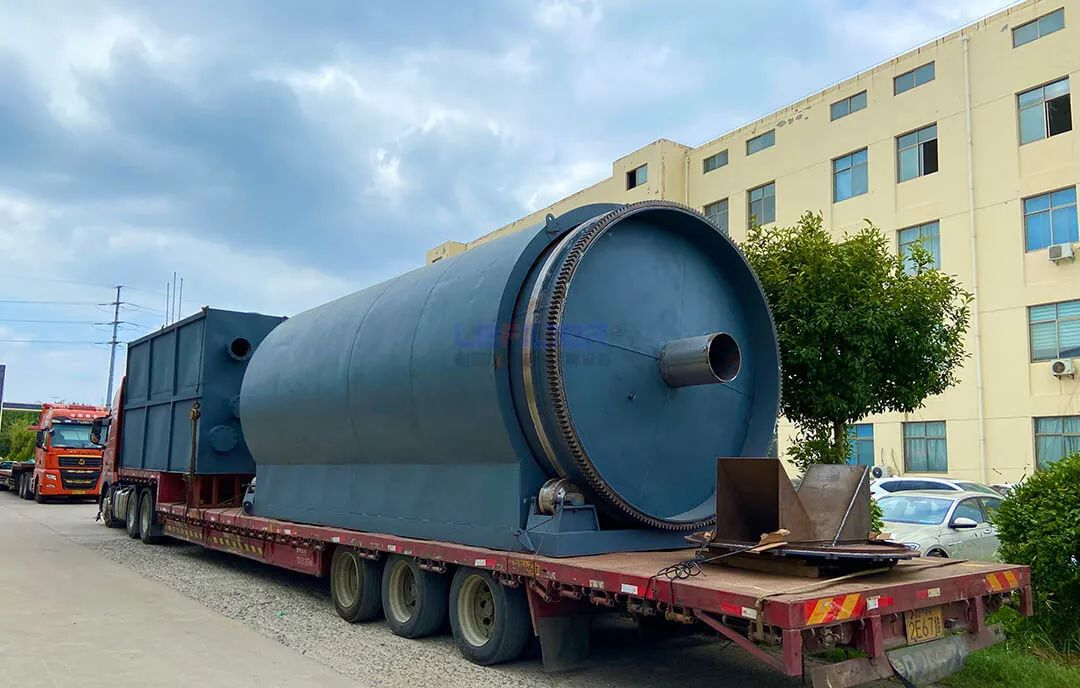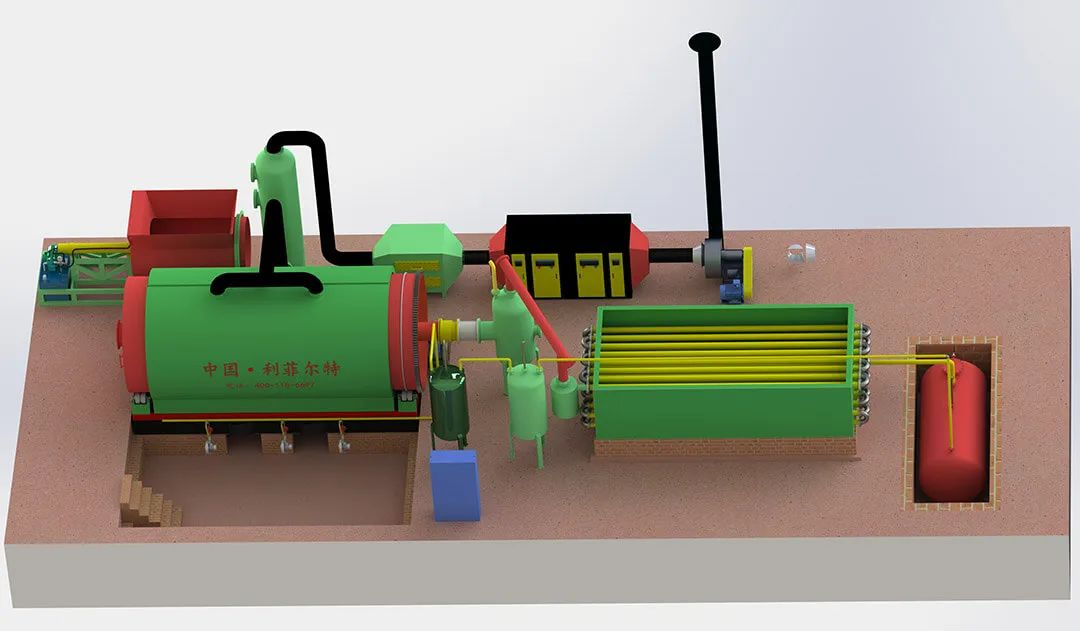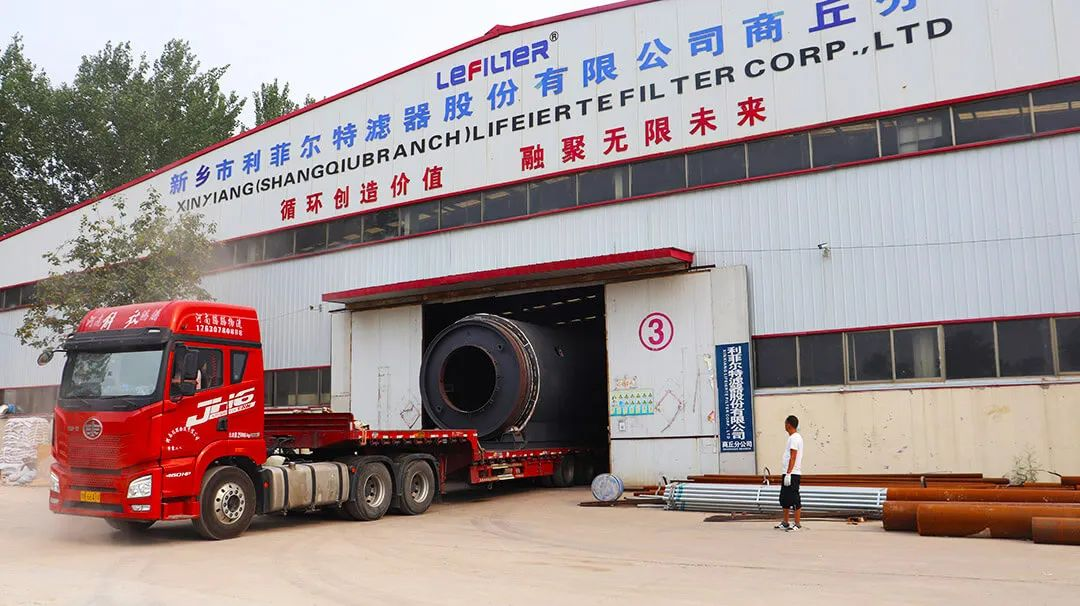Lefilter pyrolysis plant makes the resourceful way of oil-based rock cuttings more smooth
The oil-based drilling fluid has the advantages of high temperature resistance, salt calcium corrosion resistance, good lubricity, good wellbore stability, and little damage to oil and gas reservoirs, and is widely used in various drilling platforms. During drilling, the amount of oil-based rock cuttings produced by each well is between 200~800m ³。 The oil-based rock cuttings are classified as HW08 hazardous wastes in the National Catalogue of Hazardous Wastes, and millions of tons of oil-based rock cuttings need to be disposed of harmlessly every year.
Composition and harm of oil-based rock cuttings
The composition of oil-based cuttings mainly depends on the formula of oil-based drilling fluid and the geological conditions of the well. The oil-based drilling fluid is generally composed of base oil (white oil or diesel oil), water, organic clay and oil soluble chemical treatment agent. The United States has the largest shale oil resources, with 15.375 billion tons of technically recoverable resources, accounting for 21% of the global total. The second largest country is Russia, with 10.177 billion tons of technically recoverable resources, accounting for about 14% of the global total. Generally, the oil content of oil-based mud flowing back from the well bore with drilling cuttings is 35%~40%, the water content is 15%~20%, and the solid content is 40%~60%. The potential threat of oil-based rock debris to human beings, animals and plants, and the ecological environment comes from its mineral oil and heavy metal components. Because of its toxic and flammable hazard characteristics, it has been included in some national hazardous waste lists.
Regulations and standards for oil-based cuttings treatment in China
The hazard characteristic of oil-based rock cuttings is that the high content of base oil leads to high toxicity, so the oil content of ash residue after treatment is taken as the treatment standard. China has issued many legal standards and norms to guide the treatment and disposal of oily wastes. For example, HJ607-2011 Control Standard for Waste Mineral Oil Recovery and Utilization requires that "the oil content of oil-bearing rock cuttings after oil cuttings separation should be less than 5%, and the separated rock cuttings should be incinerated"; GB4284-2018 Standard for Pollution Control of Agricultural Sludge stipulates that the oil content is less than 3000mg/kg, or 0.3%, and SY/T7301-2016 Technical Requirements for Comprehensive Utilization and Pollution Control of Oily Sludge from Onshore Oil and Gas Exploitation stipulates that the total amount of petroleum hydrocarbons in the remaining solid phase of oily sludge (including oily drilling cuttings) after treatment should not be more than 2%.
The GB5085.7-2019 Standard for Identification of Hazardous Wastes - General Rules, which will be implemented on January 1, 2020, can identify the ash residue generated after the recycling of oil-based rock cuttings. If it is identified as general solid waste, it shall be stored, buried or used in other comprehensive ways.

Thermal cracking process and mechanism of oil-based rock cuttings
The pyrolysis process of oil-based rock cuttings can be divided into three stages: ① the temperature is within 300 ℃, the weight loss rate is 15.59%, and water is separated from light organic matter; ② 300~600 ℃, weight loss rate 5.82%, separation of heavy components; ③ Above 600 ℃, the weight loss rate is 4.07%, and the residual heavy petroleum hydrocarbon is cracked. The specific heat capacity shows that the heat loss of oil-based rock cuttings at 100~200 ℃ accounts for 91.03% of the total heat loss below 400 ℃. In this stage, there is less heat absorption, and 134~142 ℃ is an exothermic reaction.
The thermal cracking process of oil-based cuttings is dominated by physical reactions. The surface of oil-based rock cuttings absorbs heat, the temperature rises rapidly, and water and low molecular hydrocarbon compounds move violently, which desorbs from the surface of oil-based rock cuttings; As the thermal cracking temperature rises to 410 ℃, the heat is transferred to the interior of oil-based rock cuttings, and the internal water molecules, low molecular hydrocarbons and hydrocarbon compounds with large surface molecular weight are desorbed. When the temperature difference between the surface and the interior approaches 0 ℃, the volatile components are basically separated; If the heating time continues to extend and the temperature rises, a small amount of heavy hydrocarbons may break the chain and crack under the conditions of no oxygen or low oxygen, generating small molecule hydrocarbon compounds.
The thermal cracking process of oil-based rock cuttings is to put the oil-based rock cuttings into the cracking furnace in an anaerobic environment, indirectly heat them to 420~450 ℃ (higher than the final distillation point of white oil, lower than the cracking temperature), distill the water and oil in the oil-based rock cuttings, and generate ash. The distilled water and oil vapor are condensed and separated from oil and water through a condensing device to recover oil. The ash residue, distillate oil and waste water generated shall be treated for resource utilization.

Ash, waste water and waste after oil-based rock cuttings treatment meet environmental standards
Use Lefilter thermal cracking equipment to treat oil-based rock cuttings until the oil content is less than 1%. According to GB5085.7-2019 Identification Standard for Hazardous Wastes - General Rules, the ash residue after treatment is not classified as hazardous waste and can be used for resource utilization of building materials.
Wastewater includes oily wastewater separated from oil-water separator, ground flushing wastewater, etc., mainly including COD, petroleum, suspended solids, etc. The wastewater is treated by oil separation and sedimentation to meet the national wastewater discharge standard (GB8978-1996). It is transported to the fracturing platform in the work area and used as fracturing fluid after passing the test.
The waste gas is mainly the flue gas generated by the combustion system, the non condensable gas generated by the thermal cracking of oil-based rock cuttings, and the volatile gas generated by the temporary storage tank of oil-based rock cuttings. The main components of non condensable gas are common CO2, H2, O2, N2, CO and C1-C6 hydrocarbon gases, without complex polymer compounds. Non condensable gas has a high calorific value and can be used as fuel to be introduced into the combustion system of cracking furnace for full combustion. The SO2, NOx, soot and hydrogen chloride discharged after the combustion of flue gas and non condensable gas meet the GB18484-2001 Pollution Control Standard for Hazardous Waste Incineration. Particulate matter, non methane hydrocarbon and hydrogen chloride in volatile gas meet the emission limits in DB50/418-2016 Integrated Emission Standard of Air Pollutants, and odor concentration meets the secondary standard of GB14554-93 Emission Standard of Odor Pollutants.

Lefilter Shangqiu Branch will keep up with the situation, seize the opportunity, focus on the research, development and production of cracking equipment, promote the reduction, recycling and harmless treatment of solid wastes and hazardous wastes such as waste tires, waste plastics, oil sludge, etc., deeply cultivate the field of organic solid waste and hazardous waste cracking, and strive to build a well-known domestic solid waste cracking solution provider.
 Mobile/Wechat/Whatsapp:+86-13523737997
Mobile/Wechat/Whatsapp:+86-13523737997
 Email:recycling@lefilter.com
Email:recycling@lefilter.com 












